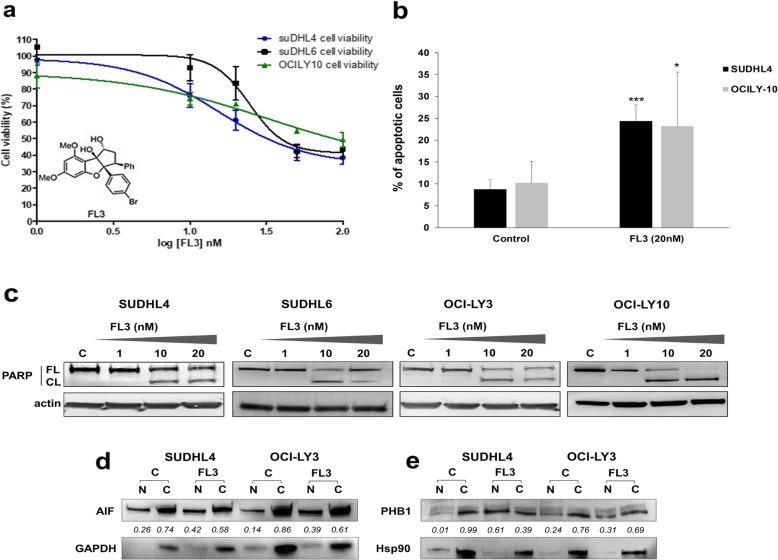Fig. 2.
The PHB ligand, FL3, induces apoptosis in GCB and ABC-DLBCL cell lines that is associated with nuclear translocation of AIF and PHB1. a Dose-response of GCB (SUDHL4/6) and ABC (OCI-LY10) DLBCL cell-line viability after 72 h FL3 treatment (1–10–20-50-100 nM) using the XTT test. The plot shows the means ± SEM of four independent experiments performed in triplicate. Inset: The chemical structure of FL3. b Flow cytometry analysis of apoptosis in cell cultures exposed or not (DMSO control) to 20 nM FL3 for 72 h by PI/Annexin V-FITC double staining. Results are shown for the SUDHL4 and OCI-LY10 cell lines as the mean percentages of apoptotic cells of five independent experiments. *, *** indicate significant differences compared to control with p < 0.05 and p < 0.001 respectively. c Apoptosis was also confirmed for all DLBCL cell lines by Western blot analysis of poly (ADP-ribose) polymerase (PARP) cleavage in cell lysates as shown from 72 h non-treated or FL3 treated cells (1–20 nM). Data are representative of three independent experiments. FL: full-length (FL), CL: cleaved PARP. Actin was used as a loading control. The intracellular localization of d AIF and e PHB1 was studied in SUDHL4 and OCI-LY3 cell lysate nuclear (N) and cytosol (C) fractions after 72 h of FL3 exposure by Western blot analysis. GAPDH and Hsp90 expressions were used to check the purity of fractions. For each condition, relative densitometric quantification was realized and the ratio to total PHB1 or AIF expression was calculated. Results are representative of two independent experiments

